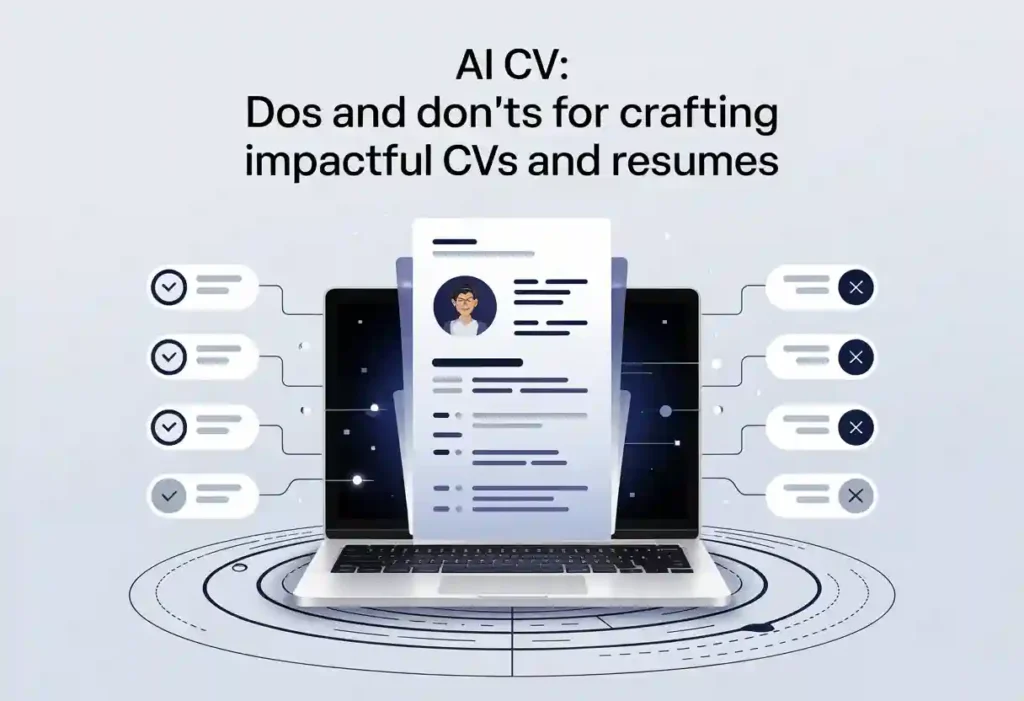People (including hiring managers) seek solutions to their issues. They are more inclined to employ a person actively working on solving those problems rather than someone who could only potentially do so.
Mastering the Art of Getting Jobs in Record Time
Getting selected for the desired role among the sea of applicants and competition is one of the best feelings in the world. It shows that the hiring manager recognizes you as a valuable addition to their organization, which is a remarkable sign.
But here’s the hard truth: many people wake up daily thinking, “I can’t get a job anywhere.” It’s a frustrating loop: applications, rejections, silence. And eventually, most give up. Not you. Not today. This guide is your ticket out of that spiral.

If you want to begin your job hunt on the right foot or are tired of repeatedly trying the same approach with no worthwhile result, NOW is an excellent time to get insights into maneuvering the workforce market.
Luckily, you’re in the perfect spot, and we position you in a way that makes landing your dream job seem like a walk in the park—maybe not that easy because you still need to put in some effort, but you get the gist.
In this step-by-step guide, we’ll be throwing light on:
- Understanding the Job Search Market
- Crafting an Effective Resume
- Optimizing Your LinkedIn Profile for Job Searches
- Preparing for an Interview
- Negotiating your first salary like a pro
- Follow-ups
Write your own happy ever after. Avoid the mistakes most dream job hunters make by following the recommendations in this post.
So let’s talk about how to get a job.
How to Get a Job Anywhere, Faster (Understanding Job Search)!
Many job seekers hit a wall and tell themselves, “I can’t get a job anywhere.” And honestly? That mindset feels real when you send 20 applications weekly and hear nothing back.
But here’s what they’re missing: the problem usually isn’t you. It’s your strategy. You can change the game by learning how the job market works, what recruiters look for, how hiring decisions are made, and how to position yourself as the no-brainer choice.
1. Determine the Job Role You Want
There’s no better place to begin than setting your mind on a specific job and going all out to get it. But how do you decide the role you want or find a befitting job that leaves you without regret?
It is simple.
- Reflect on what you want in life.
- Where do you see yourself in the future (5 to 10 years from now)?
- Vividly describe where you want to be and enthusiastically paint the picture.
This is not the time to guess. You need to be sure you are all in and will be satisfied with your job.
But before you apply for the position you want, you need to study and understand how the job community works.
Below is how this works.

Analyzing Current Job Trends
The hiring process has evolved over the years. When looking for a job, you must acquaint yourself with current trends and stay ahead of the curve.
Here are a few job trends we have noticed that have become mainstays in many industries:
- Use of Remote or Online Interview(s)
- Use of Artificial Intelligence (AI) and Software Technology
- Use of Analytics (Data-Driven Decision Making)
- Use of Robotic Process Automation (RPA)
- Assessing Compatibility of Candidates’ Competencies, Certain Skills, and Other Attributes
Keep up with these trends during your job search or interview to be conscious of what’s happening in your industry.
An Example:
Finding opportunities or job positions at a tech company with a computer science degree (an academic discipline) may be more challenging, and the options are limited. Some have even had to advance their careers by enrolling in higher or advanced classes to increase their chances.
However, when you become a front-end developer (a real-world professional position) or any software-related skill, you have many opportunities to explore, and the responses you will get when applying for relevant positions will be higher.
This is a good match that can help you get a job faster.
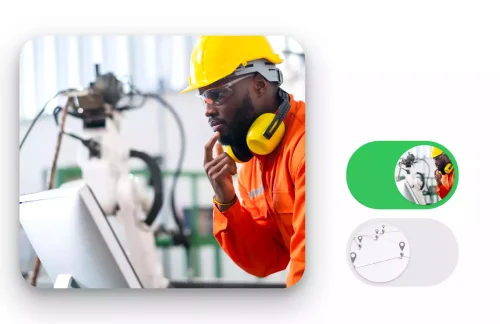
Identify High-Demand Industries
High-demand industries are fast-growing industries with high job rates. The last thing you want is to look for your dream job in places with little to no need for your services. Keep your eyes peeled for industries that welcome you with open arms to avoid a square peg in a round hole scenario.
For example, the shipping and delivery industry is undoubtedly one of the most in-demand industries today. It always needs more hands to help provide premium satisfaction to its new and existing customers.
This is an excellent industry to consider if you are an administrative personnel, clerk, communications consultant, delivery driver, lead generation specialist, marketing manager, or material handler.
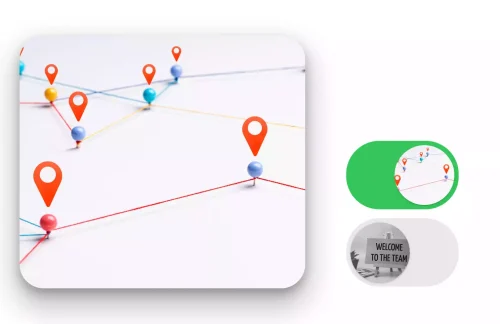
Recognize the Impact of Geographical Location on Job Opportunities
Location can sometimes be the stumbling block between you and your desired job. You may have to decide to stay put or leave your present job, familiar environment, family, or friends behind to focus on pursuing your dreams.
Enrico Moretti says your destination might significantly depend on your relocation readiness. He couldn’t have said it any better. Reaching for the star is no easy feat.
For instance, thanks to their fast-paced working environment, the chances of getting a monthly six-figure salary may be higher in a metropolitan city than in a small town.
When an opportunity like this comes knocking, you must weigh your options and make the right call — to leave and abandon your friends or stay put.
For example,
I remember a few years ago when my friend had this golden job opportunity to keep working in his current company or relocate to another country to start a new job with much better pay and incentives. Sadly, he had to relocate to a distant country to make it happen. Did he regret the decision? I can’t tell. But one thing is sure: it was one of the most complex decisions of his life.
2. Be on the Lookout for Job Listings (Posted by Hiring Managers)
Aggressively start searching for job listings by looking at places like:
- General Job Board Site: Job sites like Glassdoor, Google, Indeed, Monster, and ZipRecruiter can open your eyes to finding opportunities at small, medium, and large companies. Many jobs with the required specific role(s) can be found here
That said, this job-seeking option has one downside: you may read that it isn’t specific. While you are almost sure to find jobs that catch your eye with this job listing option, you can’t rule out the chances of coming across job posts that don’t align with your interests or niche.

- Niche Job Boards: If the general job board sites come across as burdensome, you can turn to niche job boards like Authentic Jobs, Dribble, The Muse, Upwork, and SnagAJob to find jobs that align with your passion.
- It is also worth noting that some general job sites, such as Indeed and ZipRecruiter, double as niche job board websites, depending on how you navigate them.
- Company Websites: Got any companies you’d love to work for? If yes, check their sites frequently to search for your desired job opening.
Sometimes, you may have to create an account on the company website to get exclusive or first-hand information about open positions well-suited to your skillset. After doing this, you can be sure you won’t miss a job vacancy notification from your preferred company.

3. Create a Top-level LinkedIn Profile for Your Job Search
Some people believe LinkedIn is another social media platform where people socialize and have fun. Don’t make that mistake, either.
LinkedIn is both a social media platform and a job site. How you use it will determine whether you can fully tap into its potential. This platform can be a game changer once you know how it works.
First, you need to prioritize your LinkedIn optimization to position yourself best.
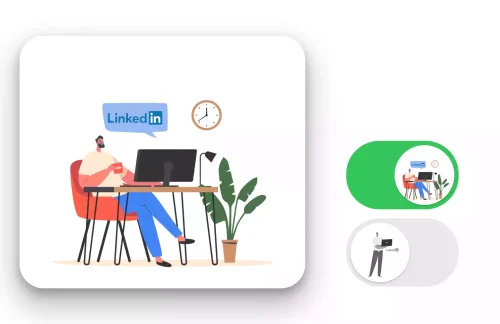
Optimizing Your Profile on LinkedIn for Job Searches
As Kofi Annan said, “Knowledge is (potential) power. Information is liberating.”
LinkedIn can link you with suitable job seekers and reduce the time frame for getting the job. But first, you need to learn optimization techniques for your profile on LinkedIn.
Optimizing your LinkedIn profile ensures employers searching for specific skills are more likely to find your resume. The more targeted your LinkedIn profile is to your job search, the more likely you will get a reply from an employer, hiring manager, or recruiter.
Like this post?
Sign up for our blog updates and never miss a post.
We’ll send you A FREE job interview eBook as a thank-you.
Tips for Creating an Attractive Profile on LinkedIn
Here are a few tips on how to complete your profile:
- Upload a professional headshot
- Upload a catchy cover photo
- Highlight your relevant skills, abilities, or offer in your headline
- Write a compelling summary with industry keywords
- Insert images in the subsection
- Fill out the work experience section (you can include your volunteer work)
- Provide details for all other sections
- Ask for recommendations
- Get people to endorse your skills
- Talk about your project-oriented initiatives and interests
- Publish a few articles containing industry-related details and keywords
- Join LinkedIn Groups to reach out to more people
- Customize Your Profile URL
Alternatively, you can optimize your profile with our free LinkedIn profile builder and use the online resume builder to create your best resume and cover letter.
Furthermore, you can use our LinkedIn summary templates for top performers who want greater visibility on LinkedIn, as it can help you get your dream job faster.
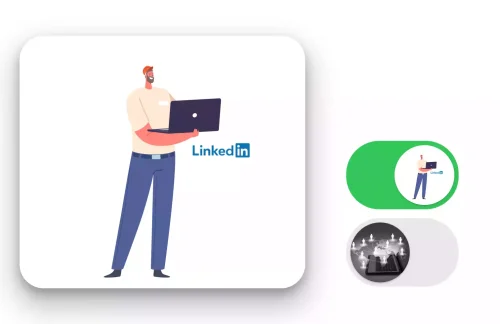
The Role of LinkedIn in Modern Job Hunting
LinkedIn can help you to:
- Build a quality connection and improve your network of professionals who can help you get into the industry and progress. You can easily connect with the company’s employees you want to work for
- Build your social media presence, positioning you as a force to be reckoned with
- Get discovered by job seekers who align with your job search
- Gain recommendations, endorsements from friends, and leads
- Access entry-level jobs that they need to build your professional portfolio
- Acquire important information during company research
- Interact with potential clients, hiring managers, and recruiters looking for potential job candidates
- Access additional resources or programs that can develop your career and help you perform more.

4. Connect with Tons of Relevant Professionals on LinkedIn (Including the Hiring Manager)
One of LinkedIn’s most excellent perks is access to top talents with like minds and professionals in your chosen industry with similar careers.
Meeting with these professionals can help you land a job referral quicker. Also, consider networking with your employers and internal recruiters. You can seek their advice on how to go about the application process and the best way to increase your chances.
There’s power in building reliable LinkedIn connections. Nevertheless, there are right and wrong approaches to this.
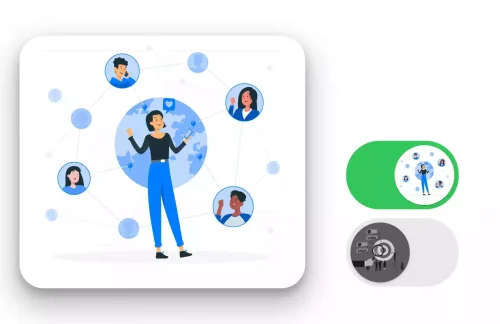
Networking on LinkedIn: Dos and Don’ts
Eager to start networking on LinkedIn? Get to know the Dos and Don’ts.
Dos
- Quickly respond to messages and invites to connect
- Practice personalization of invites to connect
- Join available LinkedIn Groups to discover any latest job mentions
- Post quality content aligned with your niche
Don'ts
- Do not spam people
- Don't post irrelevant or valueless content
- Never miss out on relevant job invitations or proposals
- Do not portray your competitors in a negative light, as it damages credibility and professionalism
You need to failproof your plans and templates to help you connect on LinkedIn with people currently working for your desired company/role.
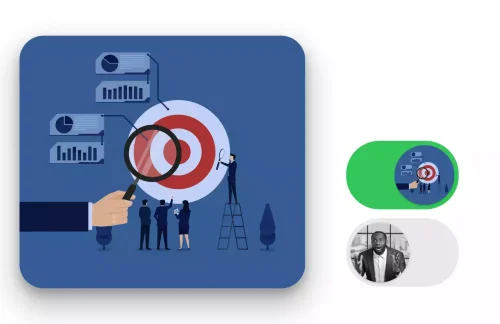
5. Identify Target Companies [Focus on Job Description(s)]
To find your target companies, you must know how to seek them out. Many companies do not advertise or publicize sensitive job openings or important particular role(s). Hence, they are known as the hidden job market.
How to Get into the Hidden Job Market
Here are helpful tips on how you can tap into this job market:
- Check with your existing contacts
- Find and involve yourself in the networking groups’ conversation
- Leverage professional organizations
- Remain active on your socials
- Build relationships with both internal and external recruiters
- Reach out to companies directly to inquire about new job openings
- Attend job fairs or meetings
Here’s a little secret: The hidden market is where the game-changing opportunities lie.
Prepare to impress hiring managers using a value validation project (VVP), your unique marketing tool.
Speaking of VVP, coming up with a VVP is not a small feat. Still, when you find a gap in the company that your VVP proposal can bridge, your chances of landing more interviews can immediately skyrocket. And it passes a message that you are ready for your new role.
We recommend following these tips to create a punchy VVP that recruiters can connect to on a deeper level:
- Carry out in-depth research on the organization. Learn as much as you can about them
- Emphasize the pain point you discovered in the company
- Suggest effective solutions that you can customize to give the company a much-needed lift
- Prove with substantial evidence how you got the game-changing ideas and why you’re the best fit to execute your suggested idea.
Once these four points are in place, send the document to the company. This proactiveness can improve your chances.
VVP works a treat for three reasons:
- Only a handful of job seekers leverage VVP
- You can drive home your message on your terms and in your words
- You are providing irresistible value to a company in dire need of what you bring, positioning yourself as the go-to employee they need to move forward.
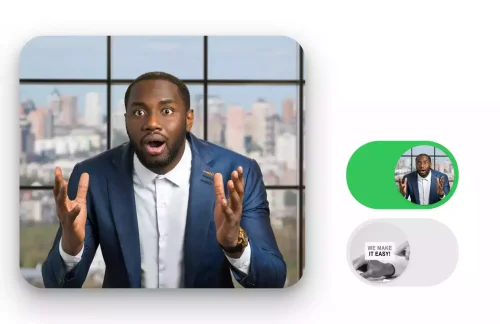
6. Your CV Must Demonstrate Your Wowing Factor
Imagine hearing these exact words from the recruiter at your forthcoming interview: Wow! Your CV is mind-blowing. What can I say? I’m impressed.”
Trust me, you are already one step in the door.
Your CV or resume is key to getting you closer to your dream role. If you get your CV right, you will blow recruiters’ minds.
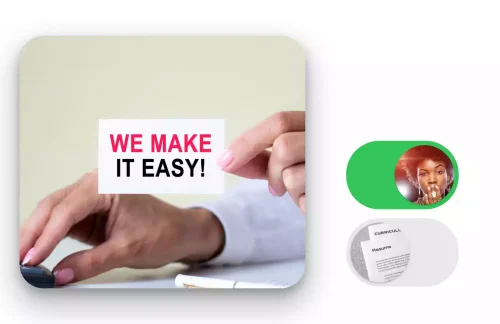
Crafting an Effective Resume
To successfully land your dream role, you must possess the desired skills, attractive personal branding, necessary qualifications, and work experience.
Employers and recruiters always look to hire people who can stand out in a tough job market, have the required transferable skills, and provide much-needed solutions.
Fortunately, you can position yourself as the problem solver a company needs by creating an irresistible identity with your resume.
Your CV or resume is a valuable sales tool. Use it to your advantage. Ensure you highlight your transferable skills, technical knowledge, and measurable results in every bullet point, as employers seek results.
Aligning your CV or resume with the status quo will not work. You must be creative and think outside the box to get a job.
Let’s briefly discuss the elements behind a CV or resume with the wow factor.
Essential Elements of a Successful Resume
Every successful resume that wins the heart of any employer, hiring manager, or recruiter and helps you get a job possesses the following elements:·
- An ideal format and layout·
- Your contact details
- An informative heading
- A clear career objective (summary)
- Educational qualification
- Your abilities and valuable skills highlight your transferable skills, technical skills, previous work experience, projects, training, and achievements
- Awards/certifications
- Additional information that describes your person, such as your career goals and fluent languages. Other examples include extracurricular activities, hobbies, interests, and volunteering experiences.
- Handy credible references
Once you have written your resume and ticked all of these boxes, you can proofread it, and you are good to go.
But if you would like to optimize your CV and stand out from the crowd, you can pick the brains of the best in the CV and resume creation business and watch us perform our magic on your resume.
Alternatively, you can quickly and easily build your resume with our free resume builder. Also, learn more about writing a resume that recruiters love and that helps you get a job.
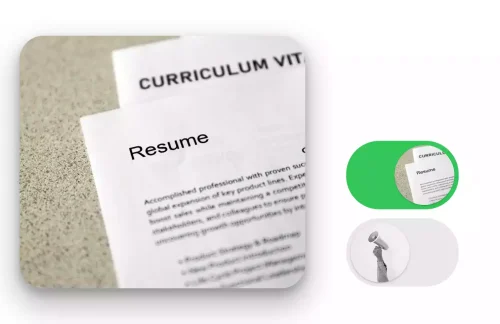
How To Tailor Your Resume for Different Job Applications
What do you do when applying to different organizations with contrasting demands or requirements?
Write another resume from scratch? That will eat into your time and, sometimes, your money. So, what’s the alternative?
Simple. Tailor your resume to suit the job description at different organizations.
Need real-life examples of how to tailor your resume without struggles? Go here.

7. Create an Attention-Grabbing, Targeted Cover Letter
You may not require a cover letter in your application. However, if the need arises, make it count by submitting an impressive resume and cover letter.
Most people submit poorly written or generic cover letters. Here is some advice for you: Don’t do that. You can quickly lose recruiters by doing that.
To win the cover letter game in your competitive job hunt, you must cut through the noise and grab the recruiter’s attention within a split second with your introduction. You must immediately show why you are a good fit and why the recruiter should hire you.
One of the most effective ways to do this is to avoid generic titles. You need to be creative, and this is where assistance from experts comes into play.
Discover the secrets to writing an outstanding cover letter. Create yours with the CVJury Cover Letter Builder. Pick from 16 different cover letter situations that suit your needs.
As a .NET developer and IT employment sector recruiters, we handle thousands of CVs, resumes, and cover letters.
Benefit from our expert knowledge, relevant experience, and insight into the current job market. NOW is the best time to upgrade your current resume, CV, and cover letter since you might have to submit one sooner rather than later.
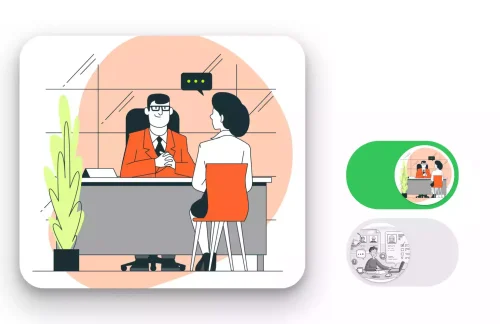
Discover How to Pass Interviews
Getting a job is challenging. You must ensure you are doing the right things and learning from experts and dream job hunters, who came, saw, and conquered.
And then, you have to deal with multiple interviews, including the initial interview stage.
But let’s be honest, it doesn’t mean much if you lack communication skills and struggle to deliver when in the hot seat.
If you get it wrong, how can you convince hiring managers or recruiters that you’re the ideal candidate to fit into the company’s culture and help them achieve the desired success?
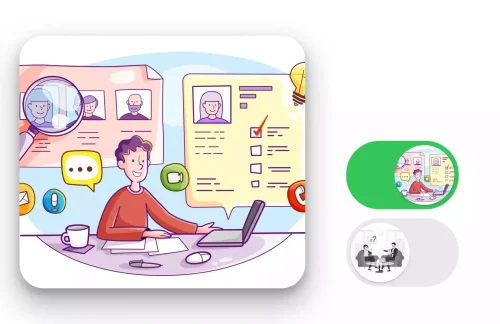
Preparing for an Interview
A saying goes, “Today’s preparation = tomorrow’s success.” This framework accurately describes your interview.
An interview is an opportunity to make a good first impression and leave a mark on your potential employers. So, ensure you’re highly motivated and prepared to give it your best shot.
The Art of Pre-Interview Research
Prepare! Prepare!! Prepare!!!
Want to capture the heart of a recruiter? Prove that you have the requirements and demonstrate your expertise in line with what the company wants. Show that you are the ideal candidate for the role. This is how you win.
Capturing the recruiter’s heart is an art. You can only achieve this by carrying out in-depth research about the company.
So, here are a few things to look for during your pre-interview research
- The experience and technical skills the organization values
- Their target audience, products, and services
- The interviewer (if possible)
- Their mission statement
- Their history
- Their competitors
- Their projects
- Their unique selling proposition
- Their culture
- Their leadership
- Their job description
Researching the company’s information will help you gain confidence ahead of the big day. Make it a date to remember.
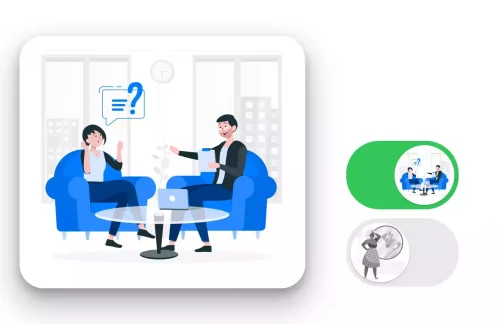
Commonly Asked Interview Questions and How To Answer Them
Let’s briefly talk about three consistent questions that interviewers are likely to ask in job interviews and how to respond to them:
Q1: Tell me about yourself
A: Tell stories. Tell an intriguing story about yourself that draws in the interviewer. Ensure it has a captivating beginning, a suspense-filled middle, and an impressive ending that makes you an interviewer’s favorite.
Q2: How did you hear about this position?
A: Answer this question with enthusiasm. Give the interviewer the impression that you have always had eyes on a job of this magnitude and have always been preparing for that exact moment. Hence, sending in your job application was a no-brainer when you saw it or heard about it on whatever platform.
Q3: How do you handle the pressure?
Answer: Emphasize how you recognize that pressure is inevitable in any workplace. Tell them about situations at home, work, or wherever you were under pressure but found ways to make things work.
And assure them you’ll bring the same energy to work by remaining calm and collected amidst pressure to help the company achieve its goals.
Explain how you are a team player and how you bring out the best in each team member.
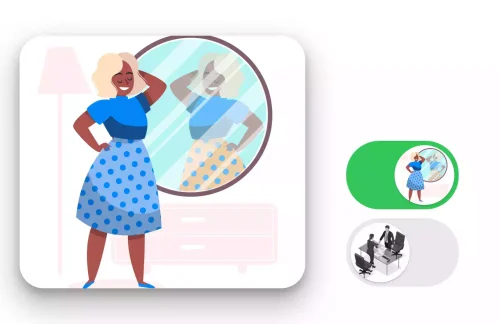
Dressing Appropriately for Interviews
Your dressing speaks volumes. All your interview preparation can go down the drain if you enter an interview room inappropriately dressed. This is why it can be the defining moment for you in the eyes of an employer.
Also, ensure the colors of your dress match. This can boost your confidence level as well. For example, you can wear a white shirt with black trousers, shoes, a belt, and a black tie. Always remember the same belt and the same shoe rule.
Sometimes, the employer may have a dress code communicated to those coming for the interview. All you have to do is adhere to the instructions.
Yet, in other cases, you can look your best for an interview by doing the following:
- Brush your teeth
- Keep your hair tidy
- Wear a suit jacket, button-down shirt, and a nice tie (for males)
- Wear a button-down shirt and sweater (for males)
- Wear a statement dress (for females)
- Wear a blouse or dress pants (for females)

The Right Interview Etiquette
After getting your dressing for the interview on point, here is some advice: Ensure every word you speak is worth its weight in gold.
Sell yourself with laudable dexterity by visualizing how you will use your skillset and services to expand the company’s network and make them more productive.
Show them you’re job-ready by talking the talk and walking the talk. Stay confident, speak audibly, and articulate every word confidently.
Sit upright and maintain eye contact as you strike the right notes. This will give the impression that you’re assured, attentive, polite, professional, confident, and trustworthy.
This way, you give your potential employer food for thought and stand a better chance of getting the job you want.
There’s more to nailing an interview than meets the eye. But don’t worry, we can help you crack the code.
Do you want access to all the necessary information to prepare effective interview strategies and tactics that assure a pleasant interviewing experience?
Get started with our specially developed 30-60-90-day plan and SARI (Situation, Action, Result, Interesting Feature) strategy to get the result you expect.

9. Negotiate Your First Salary Like a Pro
Want to increase the amount stated on the job offer letter by 5-15%? Let’s get you ready to negotiate your salary like a pro.
Understanding Job Offers and Benefits
Receiving job offers from a company is proof that they are interested in what you have to offer. A job offer includes the new role or position, terms and conditions, job description, and responsibilities. Others include start date, employment duration, expected work hours, and other details.
Go through the offer and check if there is anything you are not comfortable with, such as the working schedule. Then, you can professionally bring the issue up and discuss it with the authorized personnel.
Accepting and signing the offer implicitly means you are comfortable with everything in the offer letter, including the benefits.
Benefits are the icing on the cake that gives workers a much better working experience. They may include health insurance, life insurance, paid time off, sick leave, etc.
Note that these offers and benefits vary from one employer to another.

Effective Strategies for Salary Negotiation
Before your interview, remember that both parties, the job seeker and the employer, want a favorable deal and will always look out for their best interests.
Getting a job can be arduous, and you can be tempted to accept your potential employer’s first offer. Walking away at this stage is hard, but that doesn’t mean you have to settle for less. Negotiate well. You’re expected to negotiate.
The fact is, you’re entitled to a negotiation process. Negotiate a favorable deal that aligns with your interests if you’re uncomfortable with the company’s initial offer or benefits. You can briefly explain why you are not comfortable with the initial proposition.
However, keep your cool and be realistic with your figures. Don’t go over the top with your counterproposition. This can be a serious deal breaker for some.
Salary negotiation is a two-way street. Hence, ultimately, both parties should be on the same page and leave the negotiation table with smiles of satisfaction.
I want to learn more about the tactics required to negotiate your salary like a pro. I also want to discover how to leverage personal connections and get job referrals to land jobs quickly.
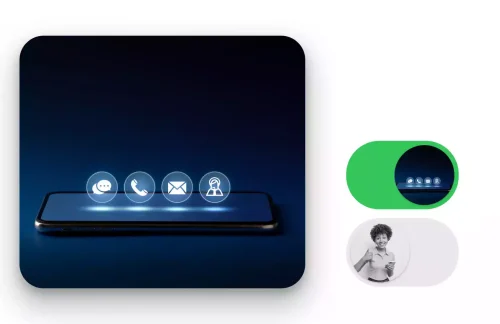
10. Follow-ups
Most people underrate follow-ups and are not aware of their power. Most job hunters do not deem it fit to follow up on jobs after an interview, thanks to this assumption: “If they are interested in hiring me, they will reach out to me.”
This is why they sit back and wait, hoping for feedback or responses. This is the wrong move. Don’t just hope for a call or an offer letter; follow up.
In a 2021 study, most employers (68%) admitted that job hunters who didn’t contact them after an interview ruined their chances. Stop such a mistake preventing you from getting job you want.
Imagine working to ace your interview only to get rejected because you didn’t follow up. Sounds unfair, right? Indeed, it’s a harsh world out there.
You’re probably wondering why follow-ups are a big deal and why these decision-makers take such drastic action when they don’t get any follow-up letter or email.

The Power of Follow-ups
Most people stop trying after the interview because they assume it’s out of their hands. But those same people say, “I can’t find a job anywhere.”
One word: follow-up.
When done right, it shows initiative, professionalism, and persistence. Employers often say that candidates who follow up after interviews leave a stronger impression and are more likely to be considered for the role. It’s a small move that can dramatically shift your results.
Here are three reasons follow-ups are essential:
Sending a follow-up or thank-you note to appreciate them for granting you an audience is a courtesy. Employers need workers with positive mindsets and ideal work ethics. Therefore, if you don’t send one, you’ll come across as an individual with poor drive and motivation.
Follow-up messages give you another opportunity to sell yourself by emphasizing key moments during the interview that can work in your favor, such as your qualifications and skill set.
Follow-up messages scream, “I’m interested in this role and qualified to help the company achieve its goals.” Show them you mean business.
Importantly, don’t send a follow-up message immediately after you get home. Instead, reflect on the interview and what you aim to achieve before pushing the email send button. The best time to send a follow-up message is within the next five days.

Get Your Dream Job In a Matter of Time: Use Your Magic Wand
You can proudly say, “I know all it takes to get a job anywhere like magic.” Yet, it’s one thing to know and another to put into action. Become an action-taker today.
Apply these job hunt best practices and bring your dreams to life faster than ever imagined.
Whenever you get this dream role, pat yourself on the back because it is evidence that your hard work paid off. Success in advance!
This might interest you…
Want to get to your dream position much faster?
You know, it’s much easier to land a role with the help of a specialist with years of experience in the job market, helping you every step of the way.
With their assistance, you can:
- Quickly become more effective in modern job search efforts
- Cut out the need to spend time and effort on things that don’t work
- Stop depending 100% on internet job boards to find a role
Now, that’s what we bring to the table at CVJury. We have covered you if you want to have more informational interviews.
We can help you land a role anywhere in 1-3 months. Almost guaranteed.
How?
During the informational interview, we will provide answers and solve the ten significant problems stopping you from being successful with your job application every week.
We will:
- Work with you one-on-one; giving you all the answers
- Grant you access to premium application materials, like our 30 valuable hours of coaching session videos for 30-90 Days, depending on your case
- Guide you until you get your job offer letter
- Show you how to do everything like a PRO
That’s our promise.
NOTE: All live coaching sessions are on Zoom or Google Meet, which are free video apps you can install on your computer or mobile device.
Read what one client said after landing his dream position. Will you be next?
“…once you learn these secrets, they will re-engineer your approach to job searching to meet reality.
Thank you for your help and advice. The 30-60-90 Day plan was top-notch.”
Ready to find that role you prefer and excited about? Let’s have a conversation today.
Recommended Articles: Job Search Hacks
- VIDEO on the Hidden job market by James Whittaker
- The employee/ job referrals techniques
- How to Get A Job Anywhere
- Free online resume builder
- Best resume builder article to read


